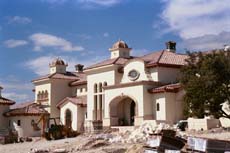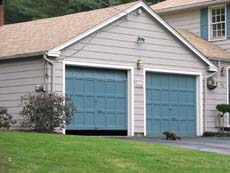index
About the practical details
click on images for full-size:





Do you want a house with this kind of pseudo-historical style?

Garages can be too prominent.

A street in Kentlands

Colors and joints and contrasts
-- You're a philosopher; what are you doing writing about suburbs and theme parks? --This text isn't only about those concrete issues; it is offering an approach to thinking about places in general, and about the nature of unity, and about the mode of existence of cultural and social codes. Doesn't that sound philosophical? I had many philosophical aims for this text.-- But intellectuals are supposed to take the long view, and make grand general pronouncements about Being and Life and Society. Not make suggestions about architectural ornaments on suburban houses. --The very universal mode was popular in the twentieth century, with all the alienated intellectuals, but if you take the longer view on philosophers you see they kept trying to do both. Plato may have said that the philosopher should be the "spectator of all time and eternity" but he also wrote The Laws for an ideal city in excruciating detail; Aristotle talks about metaphysics but also about how to deliver political speeches, and about how large the public space should be in the best society.-- But both of them are talking about ideals, not about their contemporary society, except to criticize it. --That's not quite true of Aristotle, but let that pass. Look instead at Epictetus talking about how to live the everyday, or Lucretius discussing scientific issues, or Aquinas on then current Church-State issues, or Leibniz on contemporary science, or Hegel on the English Reform Bill. . . .-- OK, but that's still not down to details of ornament. --You are harping on some provisional suggestions meant to stimulate those who would be better than I at such creativity. Both the concrete and the abstract discussions in this project are trying to offer a way of looking at -- being with -- being in -- codes and social grammars, aware of them as they are, and as we are, joined in process, so that no current set of alternatives is seen as final, or unavailable for imaginative variation and supplementation.
- [Return to "Some hesitant suggestions"]
- [Continue on the objections path]
- [Nearby: Objections and replies -- About the identity of formal systems -- About new unities ]